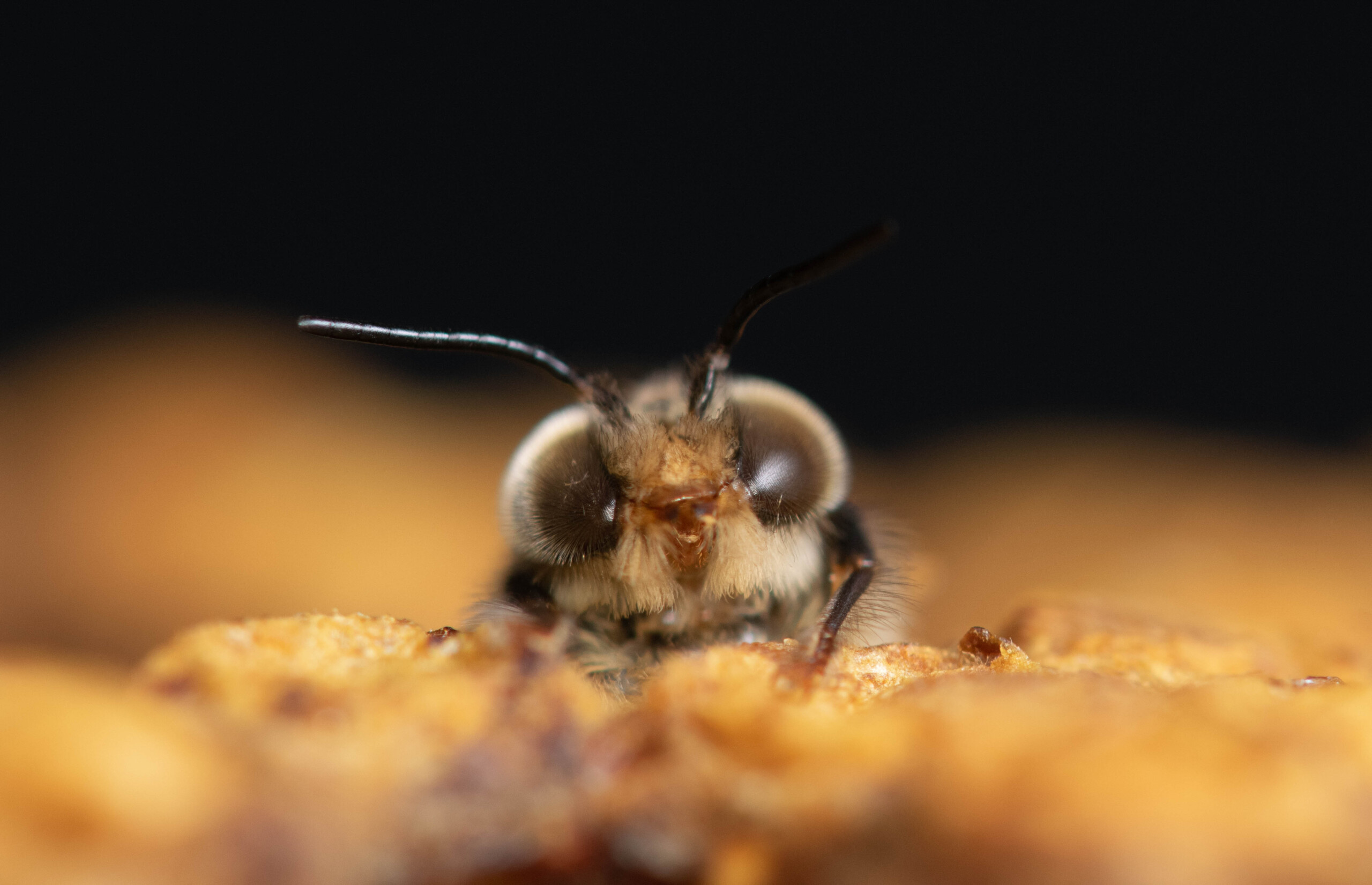Q: What good are drones in my hive? Do they just eat stores and help mites? Should I remove them?
A: There are between a few hundred to a couple of thousand drones in a hive during the summer. Many people think of them as freeloaders that consume stores and don’t contribute anything for the hive, except to explosively and fatally mate. Worse still, they are great hosts to mites and help spread varroa to other hives. While those points are true to a certain extent; drones do benefit the hive.
With the longer gestation period of the drone (24 days compared to the worker’s 21 days), more mites emerge with the drone. A worker usually emerges with the original mite and a daughter, whereas the drone emerges with the foundress and up to three daughters, which may be why mites prefer drone cells.
Beekeepers can use this trait to reduce mites in the hive by using drone-trapping frames. A drone frame is put in the hive, in which only drone brood will be raised. Mites will be drawn to these cells and once all the cells are capped, the frame can be removed, and the brood destroyed. This will remove some mites from the hive without the use of chemicals as part of your Integrated Pest Management Plan. This technique can also be used as a monitoring tool to see the mite load in a hive. While not as effective as alcohol wash, sugar shake or CO2, if done properly you could get a good idea of the mite count. Uncapping drone cells, then removing brood with a capping scratcher and visually checking the pupa and cell can give a good indication of mite numbers, if enough cells are sampled.
Other ways to encourage drone brood for trapping or testing include using three-quarter-sized wax foundation in a full-depth frame or putting a three-quarter frame in a full-depth brood box. In both cases, drone cells will be built below the worker brood.
Drones tend to be accepted easily into other hives, which is particularly useful when they’re on mating flights. Rather than flying all the way home they can stop off at a nearby hive for a feed. Phoretic (adult) mites take advantage of this behaviour by attaching themselves to drones and then when they enter a hive, transfer to a nurse bee and then into a soon-to-be capped cell.
OK, that’s the case for getting rid of drones, so what good do they do? Drones assist with thermoregulation, both heating and ventilating the hive, which is essential to brood rearing. Their most important role, though, is genetic diversity. To mate well, the queen should mate with 10–20 drones; the larger the gene pool, the better the hive can adapt and thrive. However, it will only benefit other colonies, as her sons have the same genetics. She avoids the risks of inbreeding by flying further afield than the drones from the same hive to a more distant drone congregation area. If everyone culls their drones, then queens won’t mate as well and will have shorter useful lives and the bees in the hive will lack diversity and be more susceptible to diseases.
Additionally, the hive keeps producing drones, no matter how frequently you may destroy them and there is no noticeable surplus honey produced if drones are culled. The workers will expend valuable time and resources rebuilding the drone brood.
Drones are an important part of the hive ecosystem and there are likely many important functions of which we are still unaware. The bees tend to decide when the drones’ time is up, and come autumn, the girls will mostly evict them anyway as they are no longer needed.
So, drones are more like an annoying uncle than a problem to be solved.
Ken Brown is an Apiculture Land Based Training tutor, Vice President of the Auckland Beekeepers Club and a keen hobbyist beekeeper.

Drone bee emerging from comb. Photo: Kevin Faccenda, Flickr.
